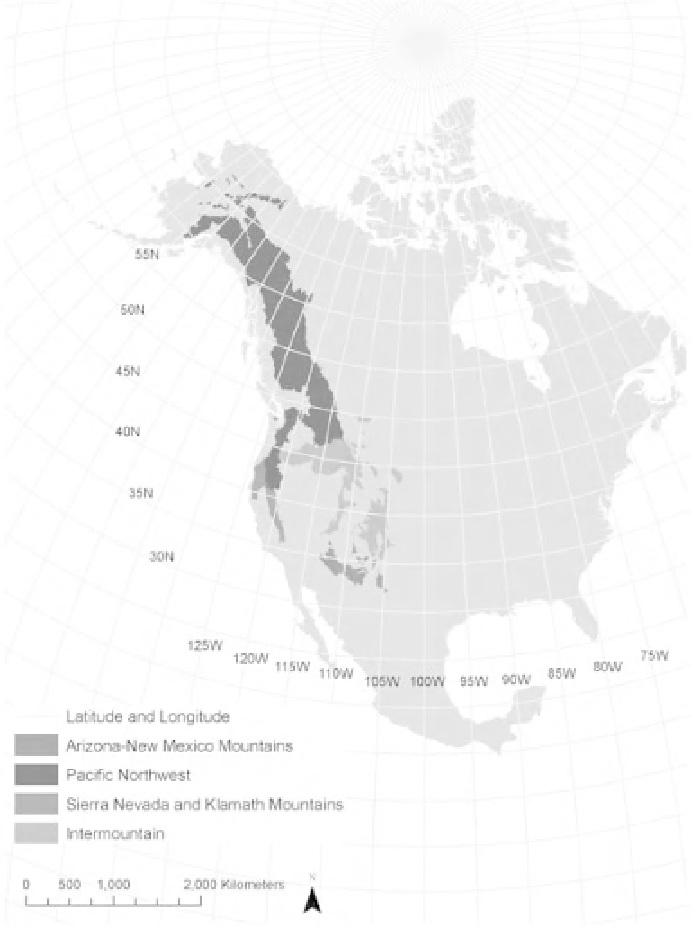Environmental Engineering Reference
In-Depth Information
Figure 13.1
Distribution of four subregions of temperate forests of the western United States and Canada. (From
Commission for Environmental Cooperation Working Group 2006.)
interior montane areas, Englemann spruce (
Picea eng-
lemanii
), grand fi r (
Abies grandis
), white fi r (
Abies con-
color
), noble fi r (
Abies procera
), white pine (
Pinus
monticola
) and western larch (
Larix occidentalis
) are
found. Just below and at the timberline are mountain
hemlock (
Tsuga mertensiana
), whitebark pine (
Pinus
albicaulis
), subalpine fi r (
Abies lasiocarpa
) and other
species that can tolerate long winters with cold, snowy
conditions predominating (Franklin & Dyrness 1988).
Plant communities across eastern Oregon and
Washington, and the Intermountain West, are deter-
mined primarily by available moisture. Lower eleva-
tions are mostly treeless, with transitional savanna
areas that have scattered junipers (
Juniperus
spp.) and
pinyon pine (
Pinus edulis
). Ponderosa pine savannas
and woodlands occupy sites with about 35 cm or more
of annual moisture (Burns & Honkala 1990). Tree
density and diversity increase as one moves upslope,
particularly on the windward side of mountain ranges,
which catch Pacifi c moisture. Higher elevations in
the interior West include spruce (
Picea
spp.), lodgepole
pine (
Pinus contorta
) and subalpine fi r, and middle





